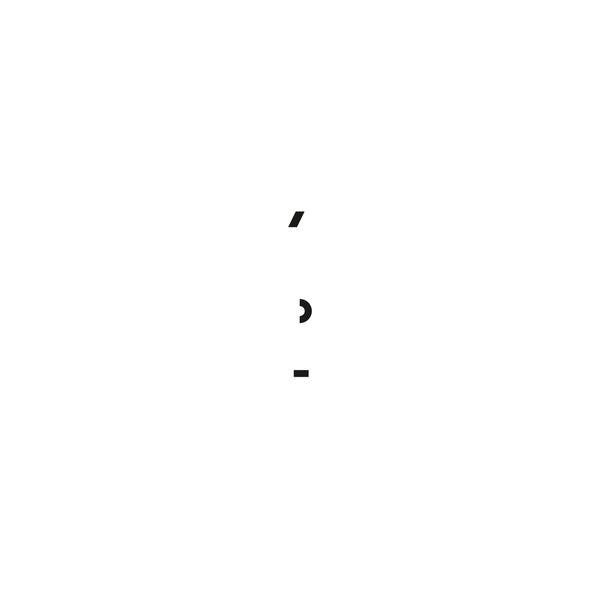1
/
of
1
ULLMANN, JAKOB - Fremde Zeit Addendum 5
Regular price
$21.00 USD
Regular price
Sale price
$21.00 USD
Unit price
/
per
Couldn't load pickup availability
"Edition RZ presents Jakob Ullmann's Fremde Zeit Addendum 5, a supplement to Fremde Zeit Addendum (RZ 1026-28CD, 2011). CD comes in carton sleeve with flap (to be added to Fremde Zeit Addendum box -- CDs 1-4), with booklet in German and English.
"Do we hear what we know? How, if this is obscured? Sent on a journey of discovery into the audible, at first almost nothing appears here. But once the ear has become accustomed to the intermediate realm of the pianissimo, an abundance of timbres becomes apparent, everyday noises unexpectedly dispersing in their non-spatial aura, then the surprising appearances of short tonal shapes, which enter the flow of time standing still as if they were revelations of the ear itself with no possibility to guess their origin, verifiable on the instrument. After all, it is in fact the tone which is the improbable, out of all that is weaving in and out within the grounding, static sound, like a distant army of constellations below, taking place uneventfully at the level of the permanent. 'solo V' is not an instrumental piece for a soloist in the ordinary sense. The grand piano becomes an unknown sound body. Although there is a soloist, they could hardly carry out the performance on their own, requiring either pre-produced electronic playback or, as in the present recording by Lukas Rickli, the participation of three assistants sustaining a soundscape. Ullmann conceived a sonic space in which sound is subjected to the laws of a specific 'gravity'. Its meridians range continuously from noise to tone and from shortest single event to sustained continuity, but what constitutes the true aura of this space is its reduced dynamics, and a rhythmic sense that is averse to any kind of melody in the usual sense. 'solo V' is also 'solistic' in another way: there is no fixed notated score, it must first be created individually, and so hardly ever will any performance score be the same as another. Rickli and his partner Zora Marti had a variety of graphic and notated material at their disposal for the development of the temporal form. Following the composer's graphically notated glissandi, Rickli and Marti modify the sound of the centers and generate transitions with them. The piece to be heard unfolds in a pulsating, breathing pianissimo. Hardly bringing any instrument to mind, it opens up a harmonic cosmos, urging the listener into it -- because other than through listening to the barely recognizable, nothing is revealed. --Rainer Schmusch, translated by Peter Gebert." - Edition RZ.
View full details
"Do we hear what we know? How, if this is obscured? Sent on a journey of discovery into the audible, at first almost nothing appears here. But once the ear has become accustomed to the intermediate realm of the pianissimo, an abundance of timbres becomes apparent, everyday noises unexpectedly dispersing in their non-spatial aura, then the surprising appearances of short tonal shapes, which enter the flow of time standing still as if they were revelations of the ear itself with no possibility to guess their origin, verifiable on the instrument. After all, it is in fact the tone which is the improbable, out of all that is weaving in and out within the grounding, static sound, like a distant army of constellations below, taking place uneventfully at the level of the permanent. 'solo V' is not an instrumental piece for a soloist in the ordinary sense. The grand piano becomes an unknown sound body. Although there is a soloist, they could hardly carry out the performance on their own, requiring either pre-produced electronic playback or, as in the present recording by Lukas Rickli, the participation of three assistants sustaining a soundscape. Ullmann conceived a sonic space in which sound is subjected to the laws of a specific 'gravity'. Its meridians range continuously from noise to tone and from shortest single event to sustained continuity, but what constitutes the true aura of this space is its reduced dynamics, and a rhythmic sense that is averse to any kind of melody in the usual sense. 'solo V' is also 'solistic' in another way: there is no fixed notated score, it must first be created individually, and so hardly ever will any performance score be the same as another. Rickli and his partner Zora Marti had a variety of graphic and notated material at their disposal for the development of the temporal form. Following the composer's graphically notated glissandi, Rickli and Marti modify the sound of the centers and generate transitions with them. The piece to be heard unfolds in a pulsating, breathing pianissimo. Hardly bringing any instrument to mind, it opens up a harmonic cosmos, urging the listener into it -- because other than through listening to the barely recognizable, nothing is revealed. --Rainer Schmusch, translated by Peter Gebert." - Edition RZ.


